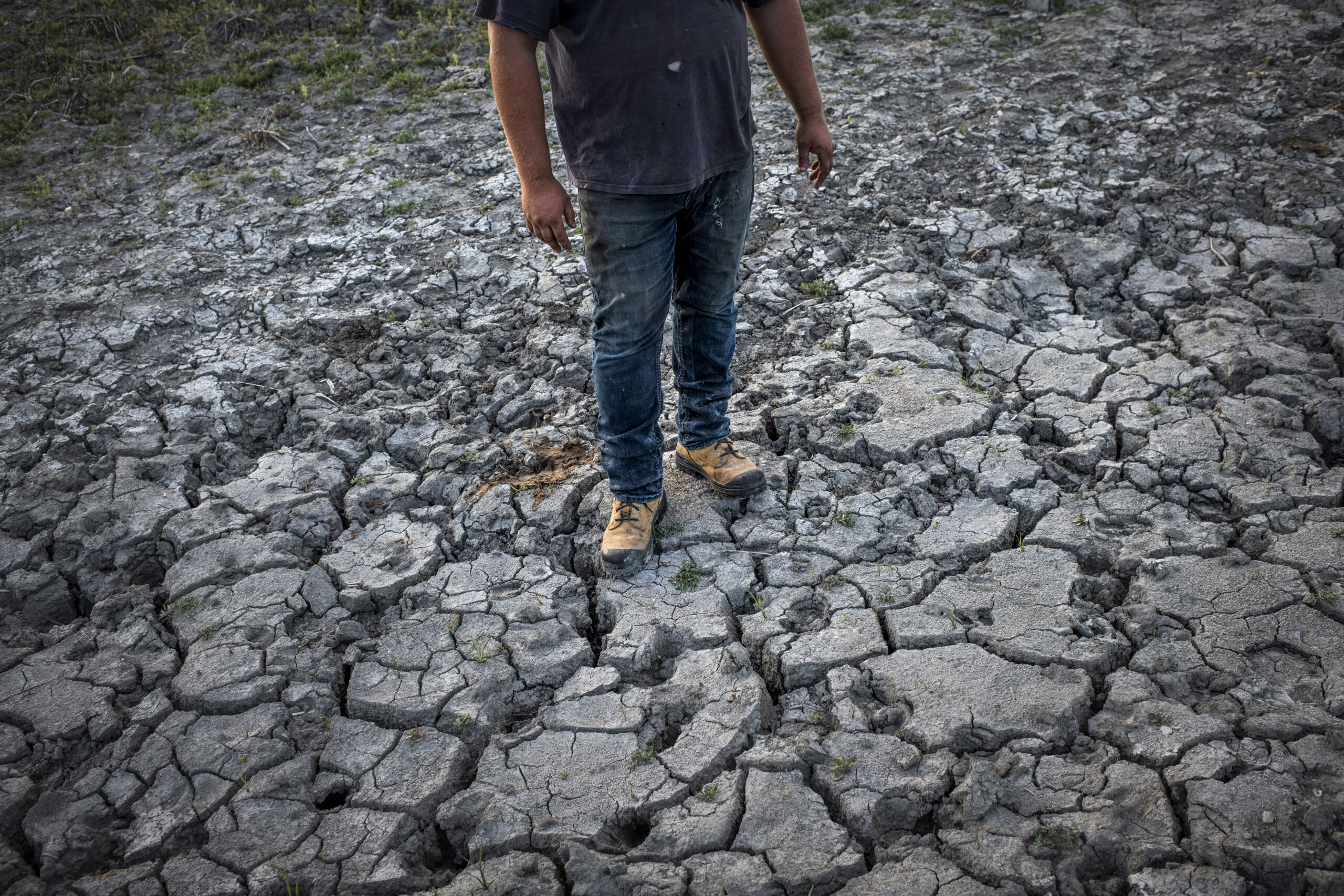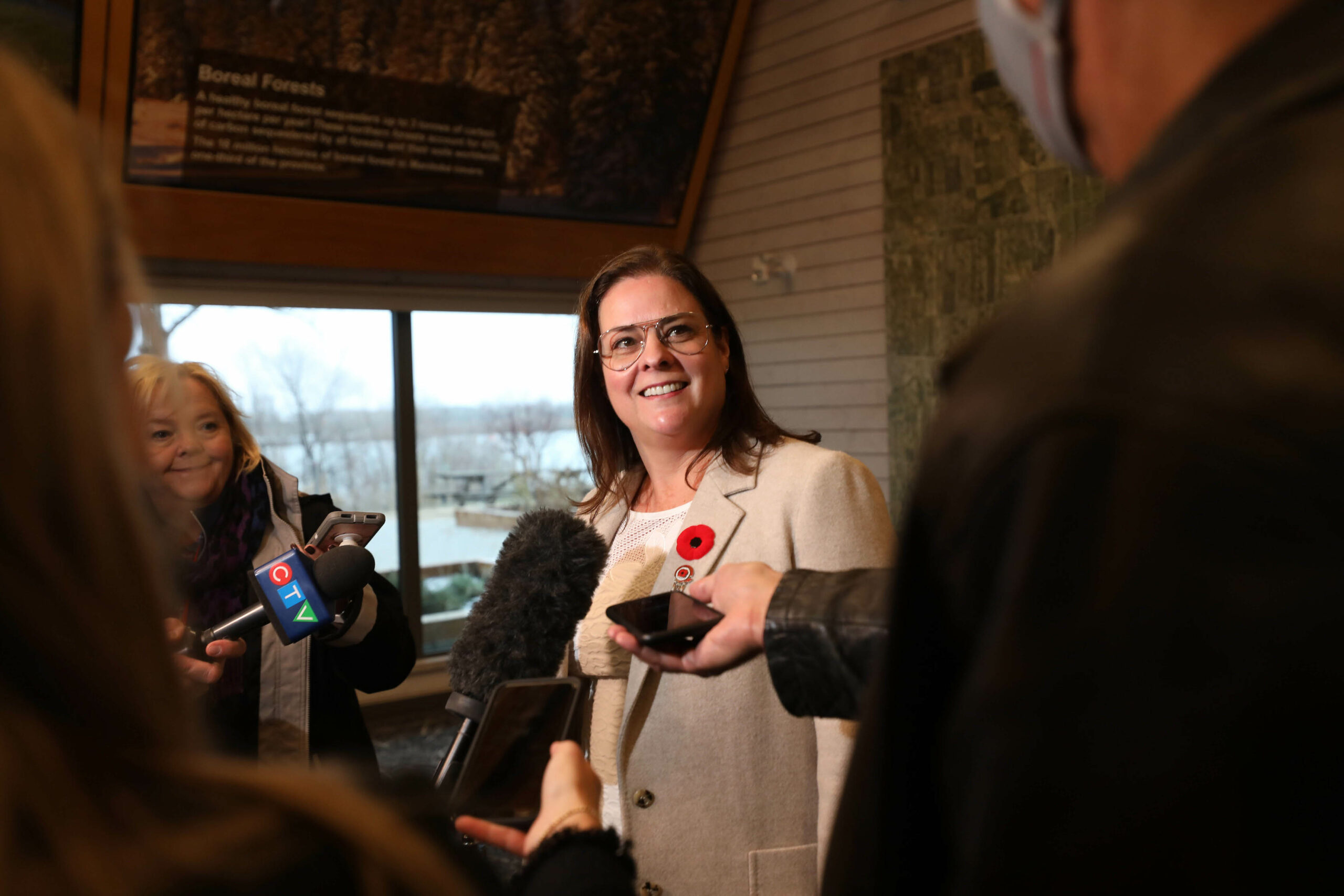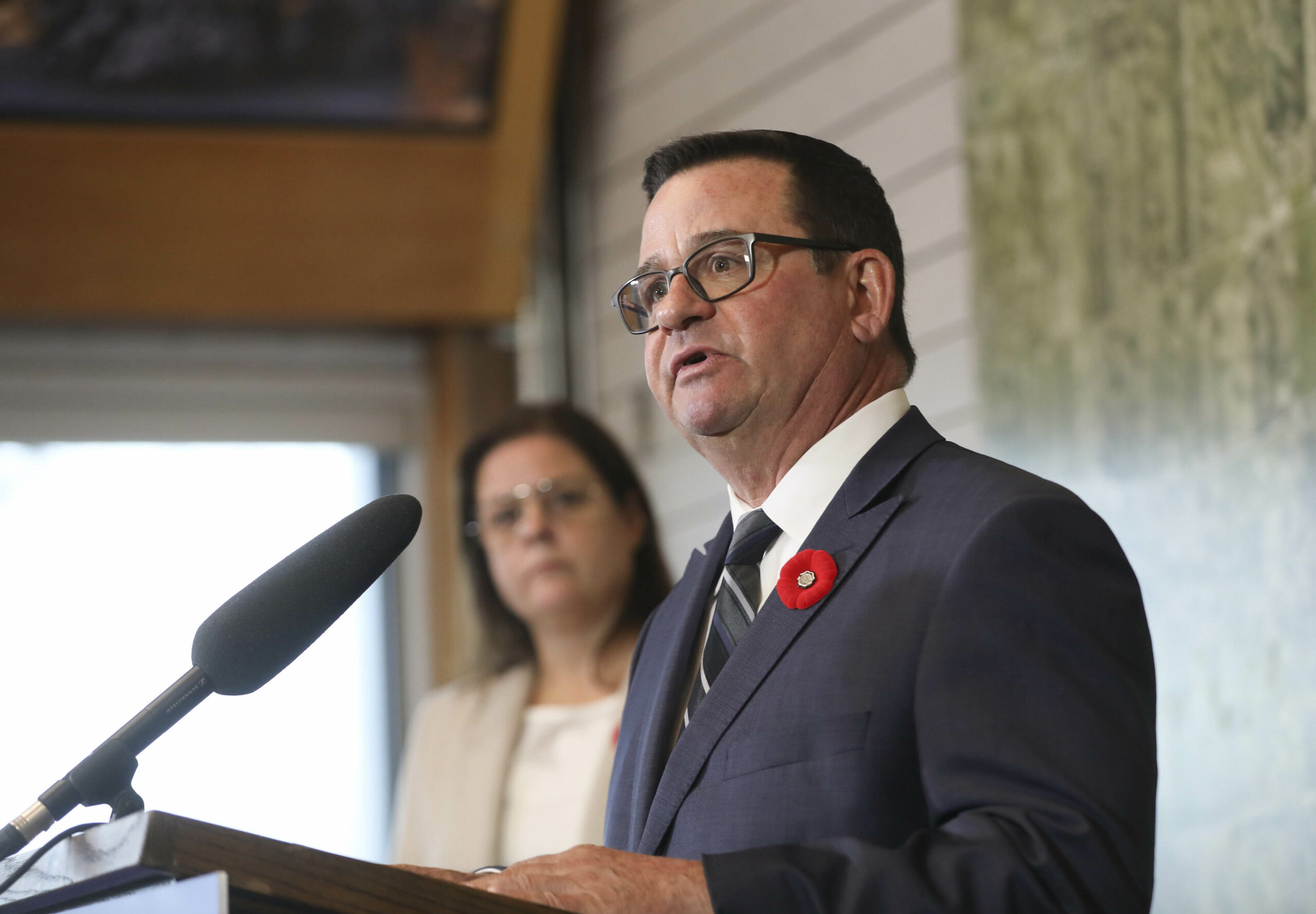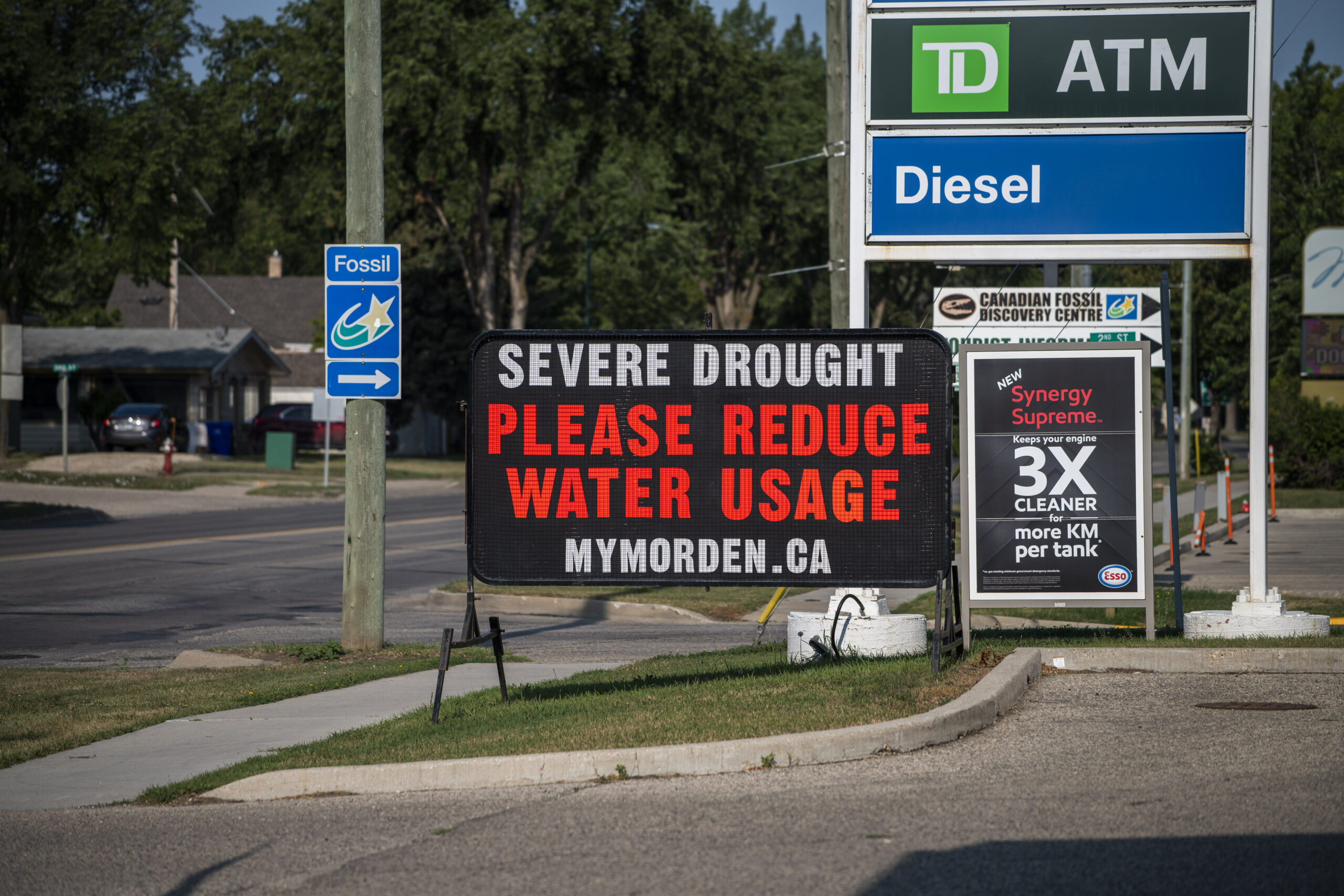
5 things to know about Winnipeg’s big sewage problem
115 billion litres, 70 years to fix, $5.5 billion in lawsuits
From nutrient-rich wetlands and 100,000 lakes to a dry southern region and an Arctic port, Manitoba is a province defined by water — after all, nearly a fifth of the province is covered in it. Now, in an update nearly 20 years in the waiting, the Manitoba government has released a strategy to manage its water resources — factoring in the impacts of a warming climate for the first time.
The Manitoba water strategy, released earlier this month, is a far-reaching document covering conservation, climate resilience, water scarcity, biodiversity and water infrastructure.
According to Dimple Roy, a water policy expert with the International Institute for Sustainable Development, a Winnipeg-based think tank, Manitoba’s water strategy takes a “broad brushstrokes” approach that lacks detail.
“Manitobans deeply care about water. We all have strong connections beyond the mundane with our waters, so it should be an exciting thing for Manitobans to see that this kind of strategy is out,” Roy said.
But at the end of the day the new strategy document is little more than “a placeholder,” she said.
“It’s exciting to see that we have this sort of strategy initiated — but I say that with cautious optimism. Without an action plan, this is a shell.”
Here’s what you need to know about the state of water issues in Manitoba and the provincial response to the climate crisis.
Manitoba’s new water strategy is, at best, a guiding document. The strategy’s 11 “focus areas” and 47 “strategic objectives” are meant to provide a touchstone for government leaders to use when making decisions about how to use, conserve and protect the province’s water resources.
It’s billed as a “durable guiding document,” with the finer details to be established in a second “water action plan” slated for release in spring 2023.
Several other Canadian jurisdictions have developed similar documents. Quebec’s provincial water strategy was released in 2018, as was a similar one in New Brunswick. Alberta first released a water strategy in 2003, which was last updated in 2008. Prince Edward Island’s water management plan, released this past summer, was criticized as “leaky,” by water protection groups who worried it was rushed and lacked detail about how it will be implemented.
As the strategy is careful to point out, “a lot has changed,” since Manitoba last took a holistic look at water management. According to Roy, it’s not unusual to see a 20-year gap between water policy documents. In fact, “20 years is not that long for a strategy,” since these kinds of documents are expected to look decades into the future.
But when the last strategy was released in 2003, climate change was not fully understood by many governments. The past two decades have shown the impact of a warming climate — and a growing population — on the province’s water systems. This past spring was marked by extreme wet weather and floods; the years before were scored by a perilous drought that threatened the livelihoods of farmers in the province’s dry, southern regions.
“So many clear implications of climate change are visible in our water systems,” Roy said. “That was not reflected in our previous strategy.”

Most crucially: a changing climate and human-made landscape changes have transformed the ways water moves and rests throughout the province. The timing and amounts of streamflows have changed, and storms, floods and droughts have become more common and intense, the strategy said. Going forward, the strategy added, “climate change is expected to make extreme heat and drought-driven water shortages more frequent and severe.”
Not to mention, Manitoba’s population is expected to grow by more than 25 per cent (about 360,000 people) between now and the 2040s — and that growth is expected to strain the province’s water resources.
“Manitoba’s water supplies are not unlimited,” the strategy said. “Without a concerted effort, there is an increasing risk that available water supplies will not meet this growing demand.”
The word “climate” appears more than 60 times in the 48-page document. One of the key focus areas is to “build our preparedness and resilience to a variable and changing climate,” acknowledging the threats of extreme weather, summer water supply shortages and flood-prone springs. Climate change will put “additional strain” on the province’s aging water infrastructure, the strategy said, and upgrading or building new infrastructure is a key goal.
Water supply, too, is in focus for the government, though “water availability under a changing climate and future demand across sectors are not well understood,” according to the strategy.
The urgency of a changing water supply has put conservation at the top of the strategy’s priority list. The document makes a point of stressing that communities, businesses, farmers and individuals will need to adapt to and mitigate the impacts of a changing climate — though it’s not yet clear how. At a press conference in early November, Manitoba Premier Heather Stefanson stressed the strategy’s “every drop counts” motto.


The strategy also highlights the importance of biodiversity. Manitoba has lost or degraded 70 per cent of its southern wetlands — some of the most productive ecosystems in the world — since 1990. The strategy notes restoring and protecting wetlands as natural infrastructure could bring about economic and environmental benefits.
For experts like Roy, the government’s approach to climate change is, generally, “a step in the right direction.”
“They have checked the boxes, they have done a good job of highlighting the climate imperative … it’s coming through quite clearly,” Roy said.
But it’s missing the follow-through.
“What I’m not seeing in this strategy document is specifics: what exactly are we doing, who is doing it, what are the resource allocations to do it?”
When the water strategy first dropped, the possibility of new fees for water led the news.
CBC reported the “province may test waters of new pricing system” and the Canadian Press said the water strategy “floats the idea of new water pricing structures to help control demand.”
The Winnipeg Free Press reported Premier Stefanson declined to answer a question about whether the province would consider upping its water-use fees — which currently range from one to two dollars per million litres for industrial and recreational use and for heating and cooling projects (municipal and agricultural users are exempt from fees).
Well, it’s true: the strategy makes a brief (so brief you might miss it) mention of possible “new water-pricing structures” as one of a list of tools that could be used to manage future water demand — along with options for homeowners, including upgraded leak detection, rainwater collection and landscaping that favours plants that need less water.
In an emailed statement, a representative from the Environment, Climate and Parks Department clarified the strategy “does not include any specific objectives on water pricing.” Instead, it’s looking to find innovative ways to do more with less water, including “practices that can reduce water use through conservation or efficiency,” the spokesperson wrote.

That includes things like reducing the amount of water needed in production and processing plants, changing farming practices to make better use of irrigation and, maybe, water pricing. Meanwhile, the government is also considering other options like green bonds, green financing and other investment opportunities focused on nature-based solutions to help pay for water infrastructure.
Regardless of whether water comes with a new cost, consumers will need to start thinking about water with sustainability in mind in the years to come. Some areas in southern Manitoba are already close to fully allocating the existing water supply, meaning those regions are already dealing with water scarcity, which has stifled economic development in the largely agriculture-driven southern belts.
Overall, the strategy said it aims to encourage Manitobans to “respect the value of water, use only what is needed and find ways to stretch limited supplies further.”
Building the guiding document took two years and in that time the government consulted stakeholders from all corners of the province. The government spoke to the Manitoba Association of Watersheds annual conference and the Northern Association of Community Councils annual general meeting, held at least 35 “in-depth” interviews with water experts, and asked Manitobans to share their thoughts through a survey and virtual “idea board” that together received more than 500 responses.
In those two years, however, consultation with Indigneous communities was sparse.
By the strategy’s own admission “some Indigenous organizations and individuals have participated in the engagement for this strategy,” but “more direct and collaborative work with Indigenous governments and rights holders is essential.”
Asked what consultation had been done with Indigenous governments to date and what consultation is planned going forward, a spokesperson for the Environment, Climate and Parks Department copied verbatim from the water strategy, stating the government holds this consultation as a “central commitment” to the strategy and has “initiated this outreach.” The Association of Manitoba Chiefs did not respond to a request for comment by publication time.
All parties agree the strategy is only a starting point — one that’s lacking in detail.
Those details are expected by spring 2023, when the province plans to unveil the second document in its water strategy: a water action plan. That action plan, which will be developed in collaboration with stakeholders and the public over the coming months, is expected to outline the short-, medium- and long-term steps the government will take to move from strategy to reality. If the strategy gives the “what” and “why” of water management in Manitoba, the action plan will bring the “how.”
Until then, it’s difficult to judge exactly what this strategy will mean for the future of water in Manitoba.
Roy said the action plan will need to include specific plans to allocate resources — both human and financial — along with dedicated policies, programming, monitoring and data collection.
All in all, Roy said, “We need more information on how this will be achieved.”
Get the inside scoop on The Narwhal’s environment and climate reporting by signing up for our free newsletter. On a warm September evening nearly 15...
Continue reading
115 billion litres, 70 years to fix, $5.5 billion in lawsuits

Climate change, geopolitics and business opportunities power a blue economy

10 billion litres of sewage are dumped into Winnipeg’s lakes and rivers each year. Some...
